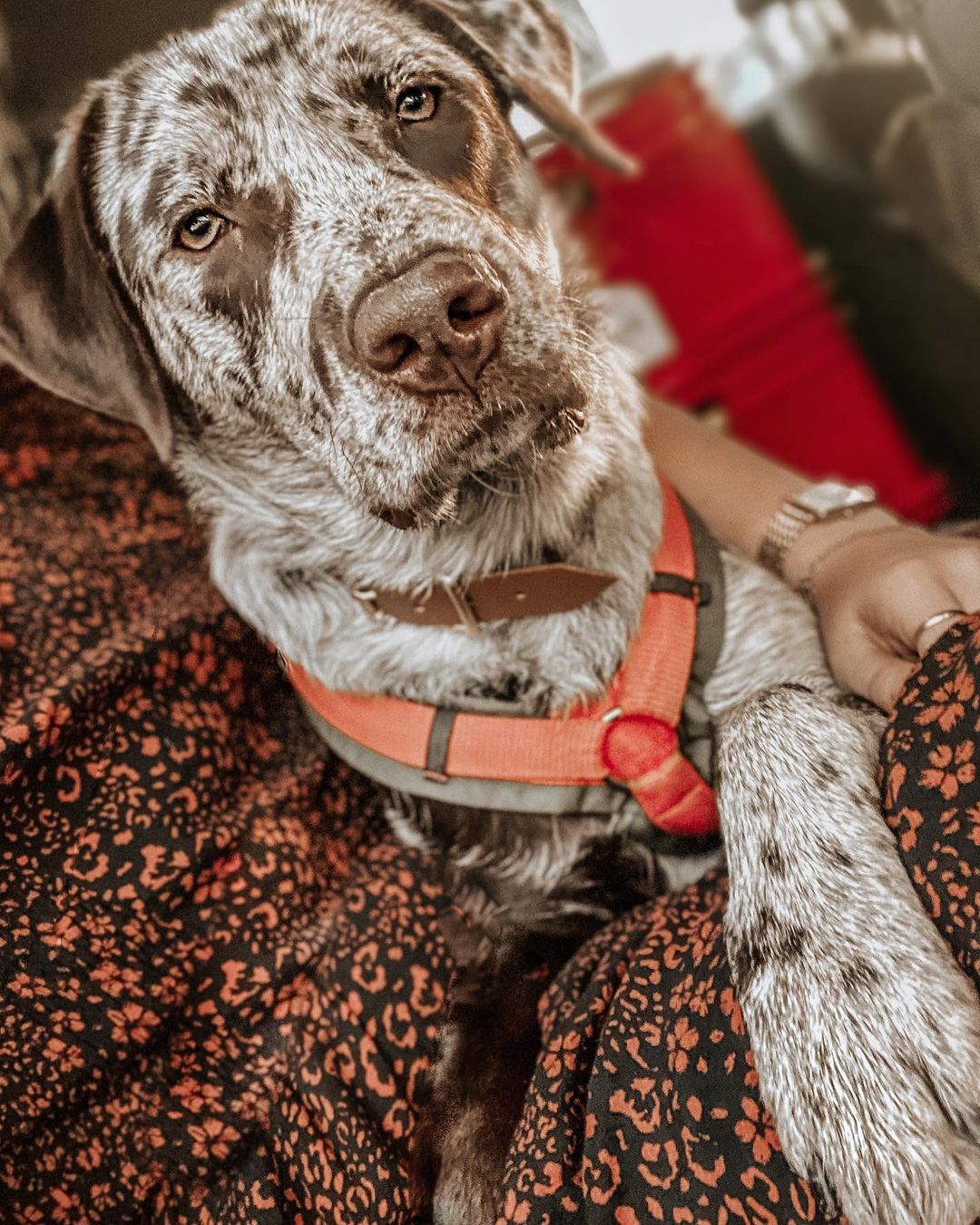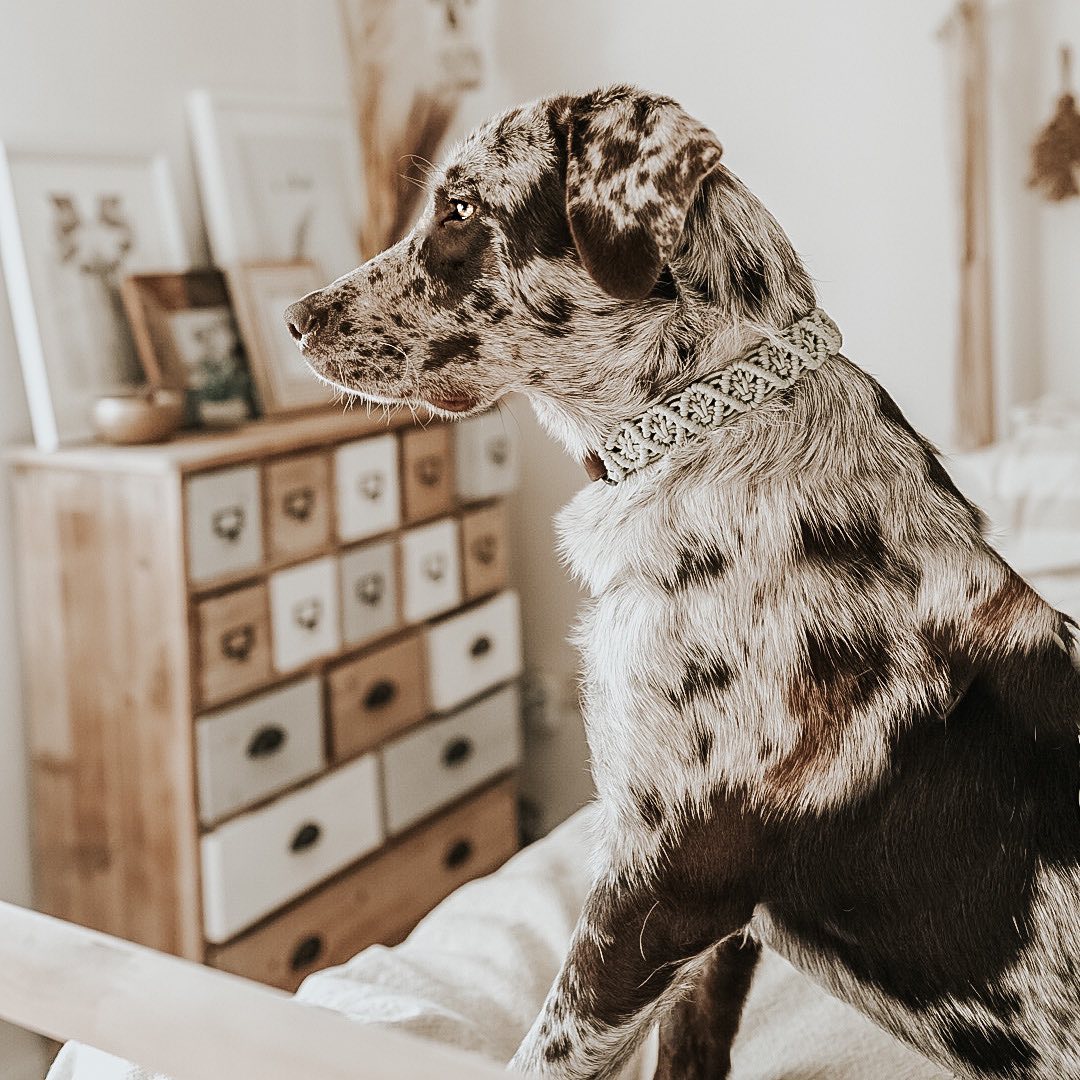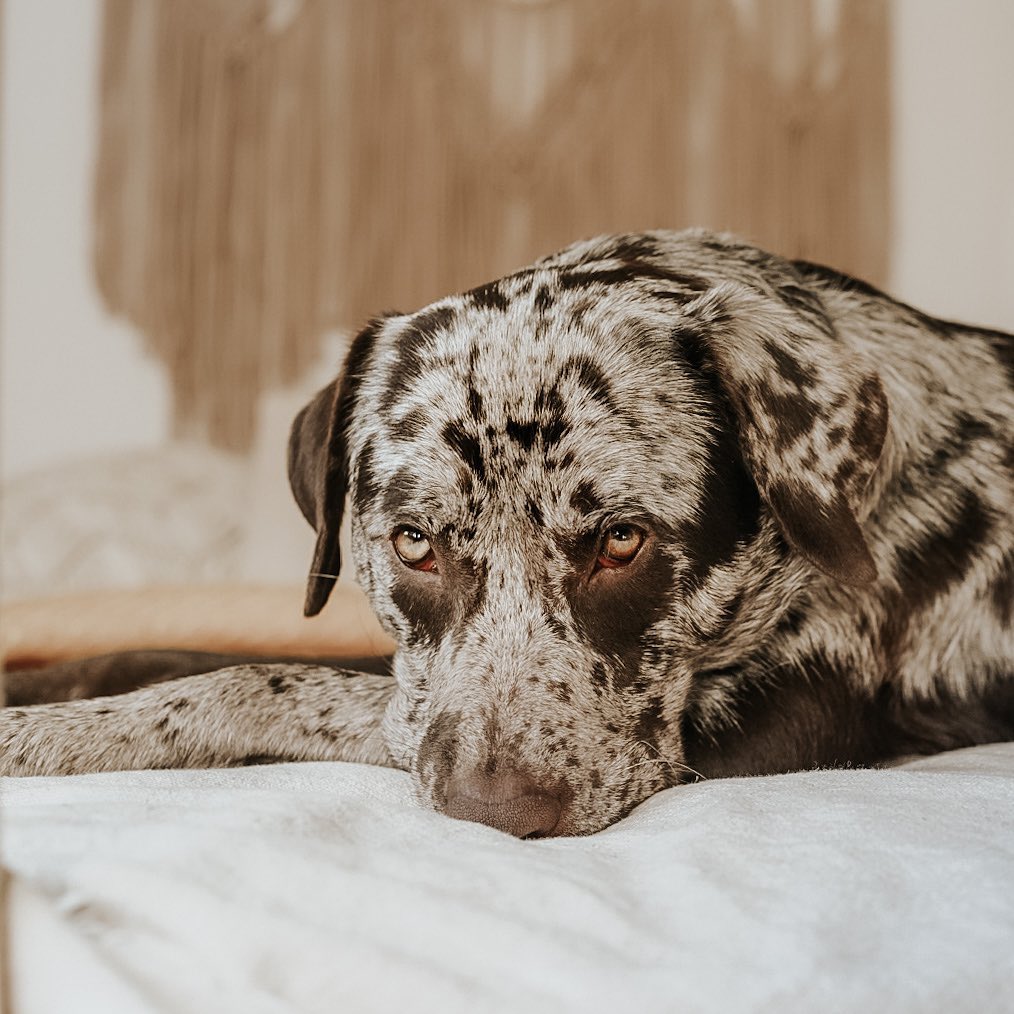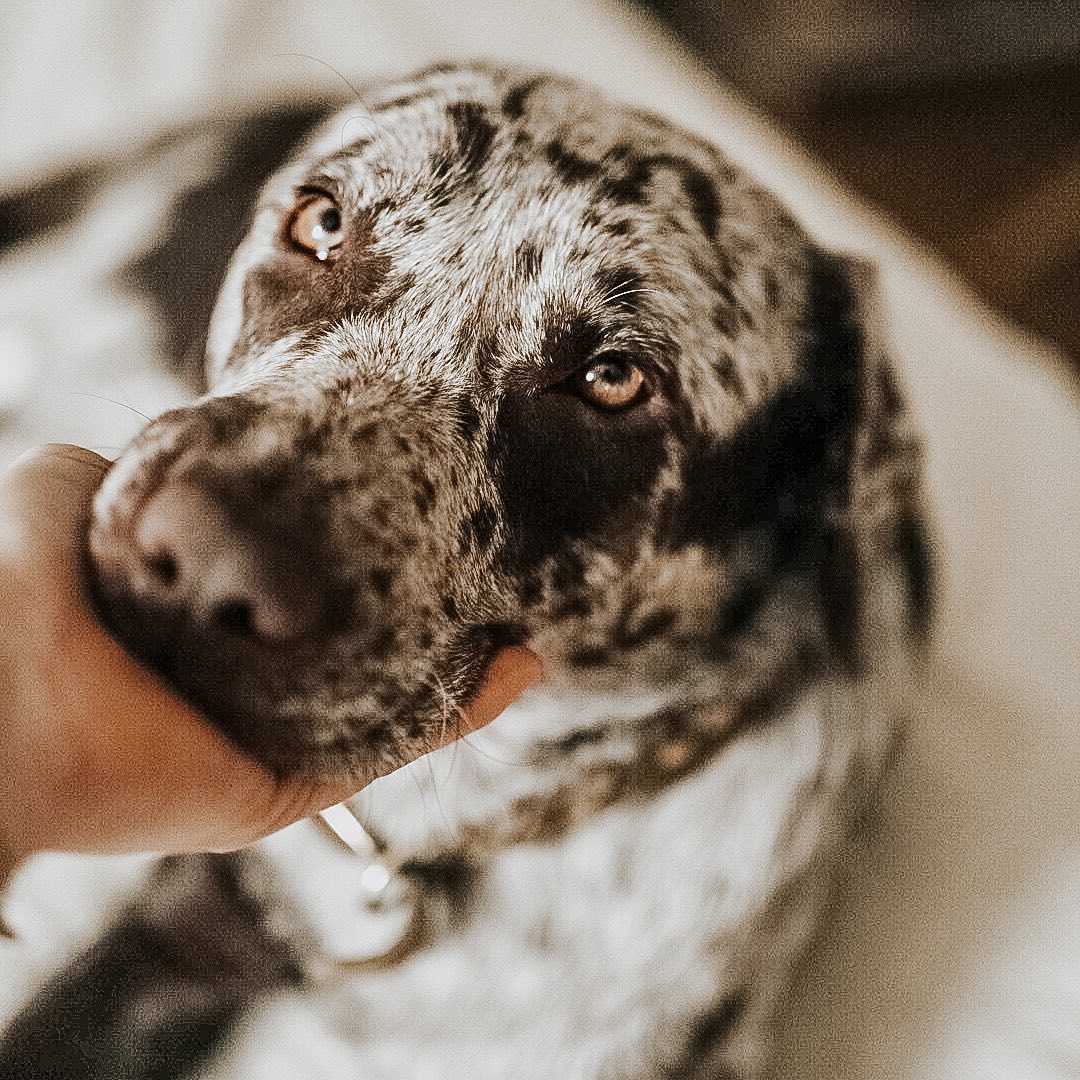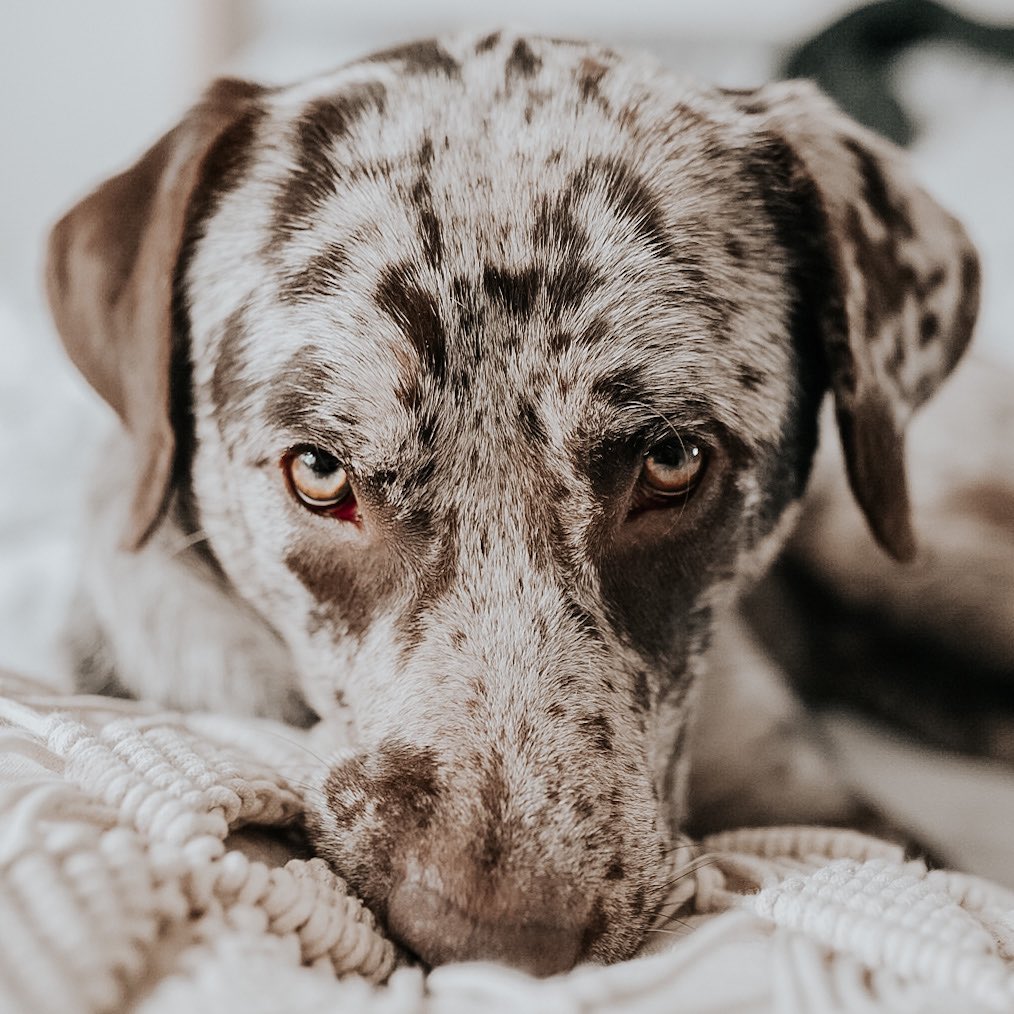Were you curious about the Australian Shepherd Lab mix? Are you wondering if this breed is right for you?
You are in the right place.
This guide will teach you everything you need to know about the Australian Labrador Shepherd mix by sharing information on size, temperament, health risks, training, and more.
About the Australian Shepherd Labrador Mix
As the name suggests, this mix is a cross between an Australian Shepherd and a Labrador Retriever.
When you cross two different breeds, traits like appearance and behavior are unpredictable.
All you really know is that the puppy is going after his parents and that he might go after one more than the other.
Did you know some people think mixed breeds are healthier than purebred dogs?
This is known as fabricated canine controversy, and it’s an ongoing debate.
The Designed Dog Controversy
The term “Designer Dog” refers to a mixed breed dog that is the result of two purebred parents.
These dogs have created a lot of controversies.
Proponents of purebreds say purebreds are healthier because responsible breeders constantly strive to reduce their animals’ health risks.
In addition, the health risks faced by established breeds are already known.
Mixed breed lovers feel that mutts have greater genetic diversity, which makes them healthier dogs.
It’s hard to know which side is right without doing some scientific research. That’s why we do just that.
Research matters
According to Carol Beuchat, both purebreds and mothers can be healthy dogs.
Problems arise when dogs are inbred.
Inbreeding reduces a dog’s fitness level, a measure of its ability to reproduce and produce useful offspring.
As long as purebred animals are produced by mating individuals who are not related, they can be as fit as mixed breeds.
In another paper, Beuchat analyzes the results of a study in which the incidents of 24 genetic disorders are examined by comparing the veterinary data of 27,254 dogs.
Of the 24 diseases, purebreds had a higher incidence of 10, crossbreeds had a higher incidence of one and had the same incidence for 13 diseases.
Now that we’ve learned about the proposed dog controversy and we’ve done some research, it’s time to move on to the star of the show: the Australian Shepherd Lab mix.
We begin by discussing the history of the parent breeds.
The origins of the Australian Shepherd
There are a number of hypotheses as to where the Australian Shepherd came from, as its history is largely controversial until the 19th century.
However, we know they have been misunderstood as they are not from Australia.
Australian shepherds were developed in the United States from the 19th century.
As the name suggests, they were used to tending sheep.
Often referred to as Aussies, these dogs became increasingly popular with the advent of western riding styles after World War II.
They also became famous through rodeos, horse shows, and films.
Origins of the Labrador Retriever
Labrador Retrievers were originally used by fishermen in Newfoundland, Canada to retrieve fish from nets as well as fish caught in the water.
They were eventually brought to the UK where the Earl of Malmesbury became aware of their natural retrieval talent and skills as a water dog.
Since fowl was a popular sport among the aristocracy, the Earl used labs to bring down dejected birds. Labs became popular in hunting dogs because of their ability to detect soil scents.
Today, labs are still a popular choice for hunters, but their easy-going temper makes them suitable for a variety of roles, from service animals to family pets.
Australian Shepherd Lab size
Labrador Retrievers are medium to large dogs and weigh between 55 and 80 pounds. They are between 21.5 and 24.5 inches tall.
Australian shepherds are medium-sized dogs that weigh between 40 and 65 pounds. They are between 18 and 23 inches tall.
An Australian Shepherd Labrador Retriever mix is likely to be a medium-sized dog, although it can be on the larger side depending on the size of the parents.
Australian Shepherd Lab Mix Properties
Both the Labs and Australian Shepherds have double coats made with a weatherproof topcoat and a warm undercoat, so you can expect the same from an Australian Labrador Sheepdog.
Laboratories come in three colors: yellow, black, and chocolate. Other colors like silver or white are simply variations of those colors.
Aussies usually come in four colors: black, red, blue merle, and red merle.
It is important to be aware of the potential dangers of the merle gene.
Dogs with two copies of the problem gene often experience eye diseases and deafness.
Since Labrador Retrievers are not available in Merle, a mix cannot inherit two copies of the problematic gene.
However, we are giving you this information as it may prove useful to you in some ways.
Australian Shepherd Labrador Retriever temperament
Labrador Retrievers are a favorite family pet because of their friendly demeanor.
They are also known for being good around children.
For example, my first lab was very patient with the five-year-old me.
He had me dressed in a hula skirt, feather boa, and sunglasses.
Since labs were bred to be hunting dogs, they definitely have that instinct and will hunt animals in your yard if they get the chance.
Australian Shepherds are energetic dogs that need plenty of exercises to keep them out of trouble.
These dogs are also shepherds and exhibit behaviors such as sipping the heels of their “flock”.
Sometimes their flock includes children, so if your Australian shepherd’s lab inherits the shepherd’s instinct, ask yourself beforehand.
Australian shepherds are very loyal. They can sometimes be territorial and show protective behavior towards their people or their home.
This makes them good watchdogs, but territorial behavior is problematic if they don’t allow anyone but family to step onto the property.
Your Australian Shepherd Labrador may behave according to its breed; it is completely random.
However, both parent breeds are intelligent and respond well to training as they please, so this trait is passed on to their offspring.
Australian Shepherd Lab Mix Grooming
You want to brush your puppy at least once a week.
Both breeds lose a lot, and if it takes time after the Aussie, it will have long hair that needs brushing to avoid matting.
Teeth should be brushed frequently, ears checked for infection, and nails trimmed as needed.
Australian Shepherd Lab Mix Health
In laboratories, there is a risk of arthritis, gas (gastric dilatation-volvulus), cruciate ligament tears, epilepsy, obesity, and eye problems including cataracts, progressive retinal atrophy
(PRA) and retinal dysplasia (RD); Hip and elbow dysplasia and osteochondritis dissecans (OCD).
Torn cruciate ligament affects the knees (back legs) of dogs and is a partial or complete tear of the ligament.
Laboratories experience this more often than other dog breeds, so potential owners of the Australian Shepherd Laboratory should be aware of this.
Australian Shepherds are at risk for hip and elbow dysplasia, drug sensitivity, hypothyroidism, epilepsy, cancer, and hereditary eye defects including eye coloboma, iris coloboma, juvenile, and elderly cataracts, detached retina, persistent pupillary membrane, progressive retinal atrophy, and distichiasis.
You will find that Aussies are at risk for several eye diseases. Of these, scientists have found a gene that appears to affect hereditary cataracts.
This gene greatly increases the likelihood of cataracts. DNA tests can be done to check whether a dog has this gene or not.
To make sure the Australian Shepherd Lab puppy is healthy, you should be sure that the breeder has checked the parent dogs for health.
Australian Shepherd Lab mix exercise and training
An Australian Shepherd Lab mix is going to require a lot of exercises, especially if the Aussie has its way as these are very energetic dogs.
If your puppy inherits herd instincts, you need to show him what is and what is not acceptable for the herd.
If your pup inherits the lab’s hunting instincts, you should practice a recall to prevent them from chasing animals out of the garden.
Also, you need to be sure they understand the boundaries of your garden so they don’t go after their noses.
Socialization is a key part of any dog’s training. This is especially true for Australian Shepherd Lab mixes as it helps protect their parents, the Australian Shepherd, their family members, and the household.
Even if you want a watchdog, you need to be sure that your dog is always under your control and is not antagonistic to other people or dogs.
Socialization helps dogs learn to get along with others and can help prevent anxiety, which could lead to aggression. It can also reduce the likelihood of potentially problematic territorial behavior.
The ideal home for an Australian Shepherd Lab puppy
The ideal home for an Australian Shepherd-Labrador mix is a house that offers plenty of exercises. A house with a yard is preferable as the puppy can go after Australian shepherds who like to stretch their legs and don’t feel as good in apartments.
If your puppy is taking after the lab it is probably fine for a home with children.
Aussies aren’t bad with kids, but sometimes they try to feed them by sipping their heels. This should be kept in mind when considering an Australian Labrador Shepherd mix in a home with children.
Because Aussies and Labs (and puppies in general) are active, your pup shouldn’t be left alone for long periods of time, especially when they are young.
They take a lot of activity to keep them occupied because boredom can lead to destructive behavior.
How to Find an Australian Shepherd Lab Mix
Designer dogs are hard to find at times, but they’re out there. It is best to do your research online and in newspapers.
Once you’ve found a breeder, there are a few things you should do to make sure you are getting a healthy puppy.
First of all, you should ask the breeder about health tests. They should have checked the health of both parent animals and be able to discuss the results with you.
Second, you should visit the breeder. This will help you get a good idea of where your pups will be raised.
You can also see the parent animals get an idea of what your puppy might look like and make sure he is healthy and has no behavioral issues.
The lab should be friendly, but don’t be too surprised if the Aussie appears a little indifferent. These dogs tend to be loyal to their families and are sometimes aloof towards strangers.
Aloof doesn’t mean hostile, however. An Aussie may not want to be your best friend on a date, but they shouldn’t show aggression.
Summary
Is an Australian Shepherd Lab Mix For You?
These dogs will be medium to large in size, shedding a lot, and have lots of energy.
They can be family dogs or guard dogs (or both) depending on the breed they are following.
An Australian Labrador Shepherd mix is eager to please, which means that they respond well to positive training methods and are likely to be a quick learner.
Early socialization is important to prevent unwanted territorial behavior that could be inherited from the Australian bloodline.
A house with a garden is more suitable for these hybrids than an apartment. Having enough space to run will make it easier for an Australian Shepherd Lab mix to get the exercise they need.

